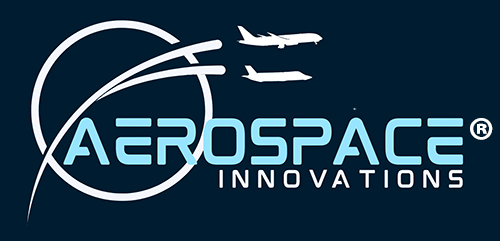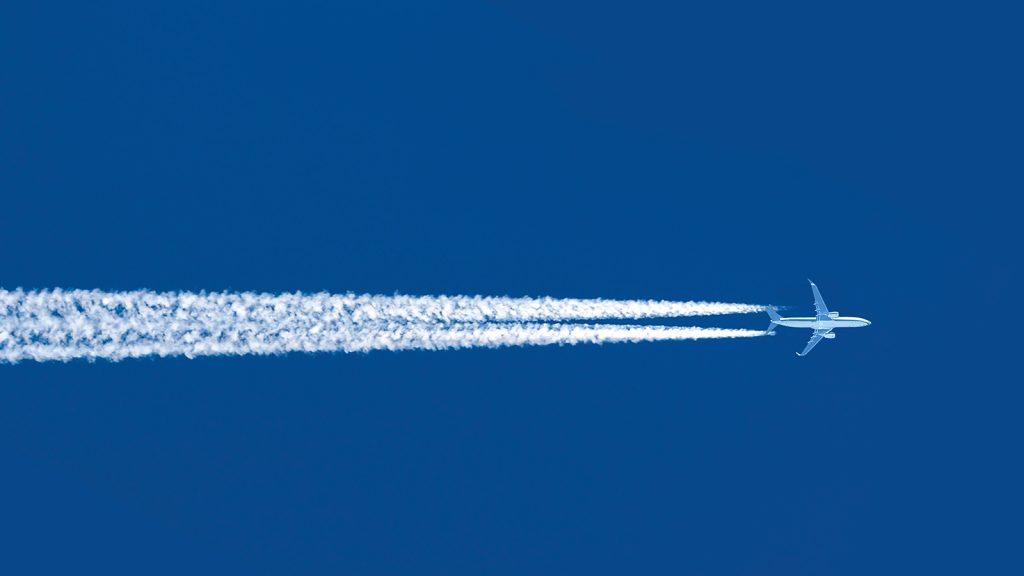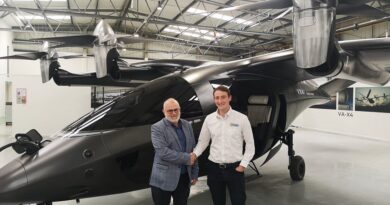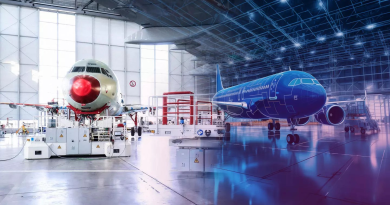Forward Looking
It seems simple. Modern aircraft produce huge amounts of data and there is the computing capacity to take it, combine it with data from other sources and produce solutions to help keep flight operations safe, smooth and efficient.
Unfortunately, it is much more complicated than that, especially when weather is involved. Take the example of contrail avoidance. Contrails are produced when aircraft fly through cold, moist air. On busy airways, they can persist and merge to produce high altitude cloud that prevents heat from escaping into the atmosphere.
Murray Skelton, VP Weather Solutions and Business Development at FLYHT Aerospace Solutions, explains that these rivers of cold, moist air in the atmosphere cannot be easily measured in real time from space, in flight or on the ground. Therefore, it is impossible to have completely accurate forecasts of where they might occur – it is around 70% with current modelling.
The biggest problem is impactive contrails that are produced in clear skies between dawn and dusk. These have a warming effect of 100mW/m2, according to the UN World Meteorological Organisation, of which the company is a member. As contrails, unlike moisture levels, can be seen by satellites, it is easy to confirm that a particular flight has successfully avoided the issue. This is important as Europe and the UK are understood to be possibly introducing carbon trading for this.
ICAO has said that, with good predictive models, they could generate contrail avoiding routes with UK NATS and EUROCONTROL, with a cost of $4-5/flight. With the exception of the US, which has backed away, the rest of the world is showing interest.
The height difference to avoid the problem can be as little as 500ft, but the current mandated vertical separation is 1,000ft. This could change with the next generation 4D ATC systems that will enable reduced distances between aircraft.
The real need is for real time information on the atmosphere around each aircraft and FLYHT has developed a system involving water vapour and pressure sensors that can send data via satcoms. It is currently flying on 100 aircraft of Southwest and UPS, feeding data to the US National Oceanic and Atmospheric Administration, although given the size of the country, this is a tiny step. From May, it will be flying on 12 Embraer 135/145 of Scottish regional airline Loganair, feeding data in real time to the UK Meteorological Office. These are operated in the Scottish highlands and islands. He adds that the data in both places will be available for general forecasts, not just for aviation.
The cumulative data from aircraft flying through the same area will see the moisture level change and trigger an alert when it is close to the contrail level.
As noted, a relatively small change of altitude can solve the problem but this can be difficult in a congested air traffic area like Europe, as exemplified by the D-KULT project (demonstrator – climate and environmentally friendly air transport), which is sponsored by the Bundesministerium für Wirtschaft und Klimaschutz (BMWK, German Federal Ministry for Economic Affairs and Climate Protection) through its LuFo Klima Civil Aviation Research Programme.
This three-year project, which ends in May 2025, is running extensive simulations to develop eco-efficient flight trajectories, considering non-CO2 emissions in European and especially in German airspace. It is also considering how to minimise noise and operating costs.
Balancing the different targets in the mathematical sense is a complex task, as shown by the fact the lead coordinator, the Deutsches Zentrum für Luft- und Raumfahrt (DLR, German Aerospace Center) is working with the Institute of Atmospheric Physics (co-coordinator), Institute for Flight Systems, Institute for Air Transport, Institute for Flight Guidance and the Institute for Aerospace Medicine. Additional partners include: DFS Deutsche Flugsicherung, DWD Deutscher Wetterdienst, Jeppesen, PACE, Deutsche Lufthansa and Lufthansa Systems. Associated partners are Airbus Operations, European Air Transport Leipzig (DHL), and the Federal Association of the German Aviation Industry (BDL ).
One of the partners, Lufthansa Systems, is involved via Lido, its suite of applications used across a wide range of flight operations. Max Hoffmann, Head of Flight Planning Software at Lufthansa Systems, explains that weather data showing where contrails might form is used to define the most cost optimal or fuel optimal routing for the aircraft. And as there is CO2 trading now, he anticipates that a similar system might evolve for non-CO2 emissions in the future. That means any deviation from the optimum route to avoid contrails will have to take into account potential increases in fuel consumption and CO2 emissions and balance them against the penalty for producing contrails. He says the company can integrate this function into its flight planning solution Lido Flight 4D but it is up to the airlines to decide if they wish to use it.
D-KULT plans to run a large scale of simulations of typical weather situations. Research data is showing that if 3-5% of the flights are optimised for contrail avoidance, the overall impact is reduced by 17-18%. However, some airways are more crowded than others, so lots of aircraft avoiding a certain area could cause delays for arrivals. The potential environmental and financial impact of that would probably be much greater, so needs to be investigated.
The company is also looking at flight optimisation from the cockpit. Typically, flight plans are generated between 12 and three hours before departure, maybe one hour before at the latest as the necessary fuel has to be delivered to the aircraft. For long haul flights of 12-15 hours, the weather along the route is usually pretty stable but there are other factors that could be considered, for example, passengers missing their flight and their baggage removed, or missing cargo, makes the aircraft lighter and so will climb differently, or the assigned flight levels may be different from that in the flight plan. These have a direct effect on fuel burn, so the aircraft can arrive at a certain point in the flight lighter or (more usually) heavier than expected. That is a good time to do a recalculation, he says.
However, the amount of data needed, even with increased onboard connectivity, makes it difficult to do that recalculation in the cockpit. Instead, the fuel load is communicated to the ground, where the flight plan is reprocessed and sent back to the aircraft. He notes that vertical optimisation is relatively simple, as the same route is maintained but at an altered, ATC-approved altitude. Horizontal optimisation, or a change of course, is much more complex, involving a combination of new waypoints and ATC centres.
There are some situations where this service would be useful, including technical or medical diversions, or the offer of a more direct route from ATC. An independent crosscheck would confirm the best route or whether the more direct route actually produced fuel savings.
This concept is currently being trialled with a number of airlines using simple data at the moment. It also involves Lufthansa Systems FlightNav, the Lido department in Zurich, which covers pilot apps, so pilots could select parameters for themselves, perhaps avoiding countries or defining a minimum altitude at certain points along the route.
It is a development of the Vertical Inflight Optimization service (Lido IFO), which has shown potential savings starting at 0.55% of trip fuel for long- and short-haul operations. Suggestions are based on up-to-date weather and compliant with restrictions as they are calculated with the same optimisation engine used for regular flight planning. They are sent via ACARS. Importantly, Lido IFO will only send actionable suggestions to the crew.
A third development is management of slot delays. If an aircraft picks up a delay of 20-40 minutes , the ground centre gets the information from the aircraft or from ATC, for example, EUROCONTROL’s Network Manager Operations Centre (NMOC). He says this is especially important in summer when flights are at their busiest and there is more chance of thunderstorms. The company is looking at what data it can add to Lido Flight 4D Integrated Flight Support (IFS) to give airlines a forecast take off time, using alternative routes or swapping slots between flights. That swapping could involve a flight with lots of connecting passengers or a flight with high value customers, that can take precedence over other flights.
Larger airlines have dedicated teams to working out alternatives that will allow the aircraft to reach the airport in time but is a highly manual effort, he says, while Lido Flight 4D IFS could do it automatically, although this would have to be tailored to each airline’s specific operational requirements. Automation would free up those staff to deal with extremely critical situations.
By Ian Harbison




